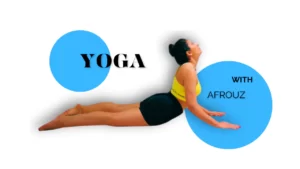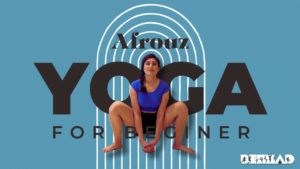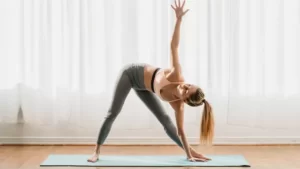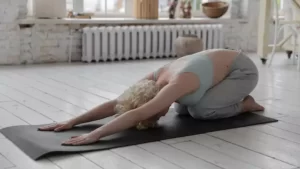Yoga poses, also known as asanas, are the physical postures that are practiced in yoga. They are designed to stretch and strengthen the muscles, improve flexibility, and promote overall health and well-being.
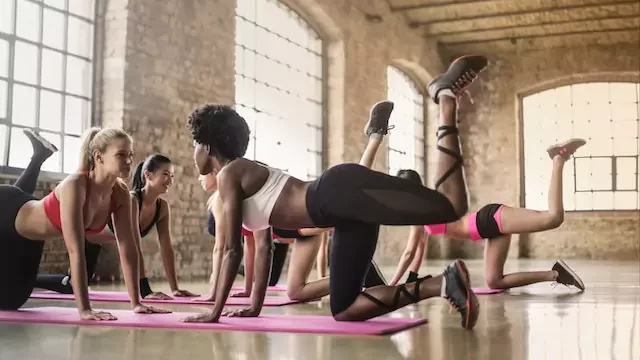
What are Yoga Poses?
Yoga poses, also known as asanas, are the physical postures that are practiced in yoga. They are designed to stretch and strengthen the muscles, improve flexibility, and promote overall health and well-being.
Benefits of Yoga Poses
The benefits of yoga poses are many and varied. They can help to:
- Improve flexibility and range of motion
- Strengthen the muscles
- Improve cardiovascular health
- Reduce stress and anxiety
- Improve sleep quality
- Boost energy levels
- Improve digestion
- Improve posture
- Increase self-awareness
- Promote overall well-being
Embarking on a journey to achieve inner peace, flexibility, and a healthier lifestyle? Look no further! In this comprehensive guide, we will delve into 12 remarkable yoga poses that can transform your physical and mental well-being. Whether you’re a seasoned yogi or a beginner, these poses cater to all levels of practitioners, helping you reap the benefits of this ancient practice.
The Power of Yoga: Enhancing Mind and Body
Yoga is more than just a physical exercise; it’s a holistic practice that integrates mind, body, and spirit. By performing these 12 yoga poses regularly, you can unlock a range of benefits, including increased flexibility, reduced stress, enhanced balance, and improved posture. Dive into this transformative journey and discover how yoga can positively impact your life.
12 Essential Yoga Poses for All Levels
Mountain Pose (Talasana)
- Mountain Pose is a basic standing pose that is used as a foundation for many other poses. It is a great way to improve posture, alignment, and balance.
- To do Mountain Pose, stand with your feet hip-width apart and your toes pointing forward. Ground your feet evenly into the floor and lengthen your spine. Lift your arms overhead, parallel to the floor, and clasp your hands together. Gaze forward and breathe deeply.
- Hold Mountain Pose for 5-10 breaths, or as long as you are comfortable.
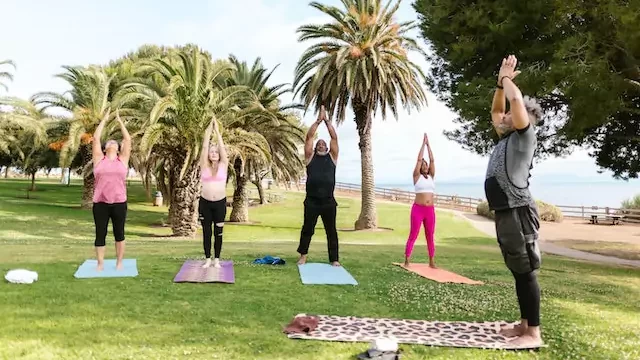
Downward-Facing Dog Pose (Adho Mukha Svanasana)
- Downward-Facing Dog Pose is a foundational pose in yoga that is often used as a way to warm up the body and prepare for more challenging poses. It is also a great way to stretch the back, shoulders, and hamstrings.
- To do Downward-Facing Dog Pose, start in a tabletop position with your hands shoulder-width apart and your knees hip-width apart. Press your hands into the floor and straighten your legs, lifting your hips up towards the ceiling. Keep your spine long and your shoulders relaxed. Gaze down towards your toes.
- Hold Downward-Facing Dog Pose for 5-10 breaths, or as long as you are comfortable.
Child’s Pose (Balasana)
- Child’s Pose is a resting pose that is often used to come out of a challenging pose or to simply relax and rejuvenate. It is a great way to stretch the back, hips, and ankles.
- To do Child’s Pose, start on your hands and knees. Bring your hips back towards your heels and rest your forehead on the floor. Spread your fingers wide and relax your shoulders. Breathe deeply and allow your body to melt into the pose.
- Hold Child’s Pose for 5-10 breaths, or as long as you are comfortable.
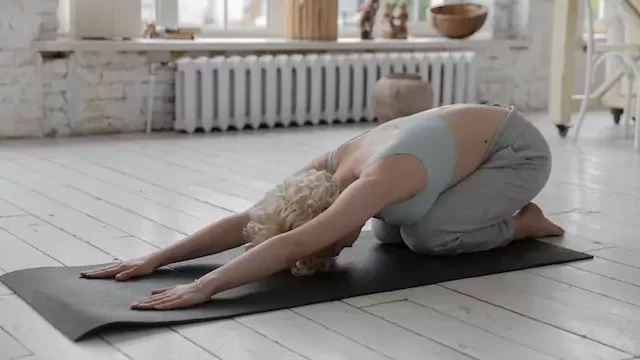
Warrior Pose I (Virabhadrasana I)
- Warrior Pose I is a standing pose that is known for its strength and balance. It is a great way to build strength in the legs, hips, and core, and it also helps to improve balance and focus.
- To do Warrior Pose I, start in Mountain Pose (Talasana). Step forward with your right leg and bend your right knee, bringing your right thigh parallel to the floor. Keep your back leg straight and your hips square. Reach your arms overhead, parallel to the floor, and gaze forward.
- Hold Warrior Pose I for 5-10 breaths, then repeat on the other side.
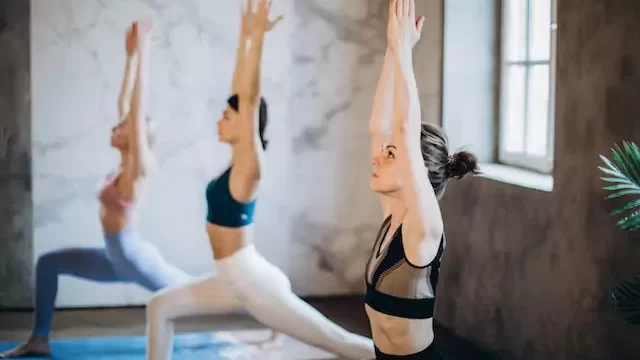
Triangle Pose (Trikonasana)
- Triangle Pose is a standing pose that is known for its stretch and balance. It is a great way to stretch the sides of the body, improve flexibility, and strengthen the core.
- To do Triangle Pose, start in Mountain Pose (Talasana). Step to the side with your right leg and bend your right knee, bringing your right thigh parallel to the floor. Extend your left leg straight back, keeping your heel on the ground. Reach your arms overhead, parallel to the floor, and gaze at your right hand.
- Hold Triangle Pose for 5-10 breaths, then repeat on the other side.
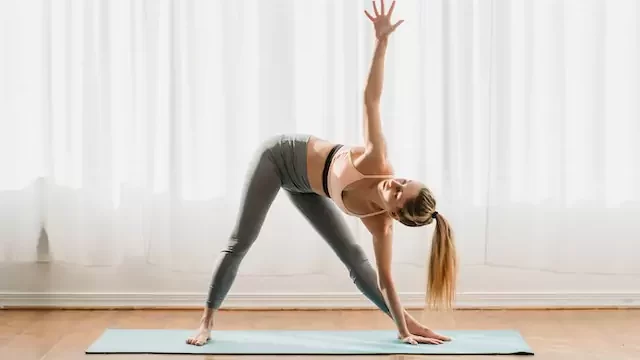
Cobra Pose (Bhujangasana)
- Cobra Pose is a backbend pose that is known for its strengthening and energizing effects. It is a great way to strengthen the spine, shoulders, and arms, and it also helps to improve flexibility in the back.
- To do Cobra Pose, start on your stomach with your hands shoulder-width apart and your fingertips under your shoulders. Press down into your hands and lift your chest off the floor, keeping your hips down. Arch your back and gaze up towards the ceiling.
- Hold Cobra Pose for 5-10 breaths, then lower back down to the floor.
Bridge Pose (Setu Bandhasana)
- Bridge Pose is a backbend pose that is known for its calming and relaxing effects. It is a great way to strengthen the spine, hips, and buttocks, and it also helps to improve flexibility in the back.
- To do Bridge Pose, start lying on your back with your knees bent and your feet flat on the floor. Place your hands on your hips and press down into your hands as you lift your hips off the floor. Keep your spine long and your shoulders relaxed.
- Hold Bridge Pose for 5-10 breaths, then lower back down to the floor.
Seated Forward Bend (Paschimottanasana)
- Seated Forward Bend is a classic yoga pose that is known for its deep stretch in the hamstrings and calves. It is a great way to improve flexibility in the lower body, and it also helps to calm the mind and nervous system.
- To do Seated Forward Bend, start sitting on the floor with your legs straight out in front of you. Bend forward from your hips and reach towards your toes, keeping your back straight. If you can’t reach your toes, place your hands on your shins or thighs.
- Hold Seated Forward Bend for 5-10 breaths, then slowly come back up to sitting.
Cat-Cow Pose (Marjaryasana-Bitilasana)
- Cat-Cow Pose is a beginner yoga pose that is known for its gentle spine stretch. It is a great way to warm up the body and prepare for more challenging poses, and it also helps to improve flexibility and coordination.
- To do Cat-Cow Pose, start on your hands and knees with your back straight. Inhale as you arch your back like a cat, tucking your chin to your chest and lifting your tailbone towards the ceiling. Exhale as you round your back like a cow, dropping your head towards the floor and tucking your tailbone under.
- Repeat Cat-Cow Pose for 5-10 breaths, then rest in Child’s Pose (Balasana).
Sun Salutation (Surya Namaskar)
- Sun Salutation is a sequence of 12 yoga poses that are performed in a flowing, rhythmic manner. It is a great way to warm up the body, improve flexibility, and connect with the breath.
- There are many different variations of Sun Salutation, but the most common one begins in Mountain Pose (Talasana) and then flows through Downward-Facing Dog Pose (Adho Mukha Svanasana), Upward-Facing Dog Pose (Urdhva Mukha Svanasana), Plank Pose (Chaturanga Dandasana), and Cobra Pose (Bhujangasana).
- The sequence is then reversed, ending back in Mountain Pose.
- Sun Salutation can be practiced at any time of day, but it is especially beneficial in the morning to help wake up the body and mind. It is also a good pose to practice before or after a workout.
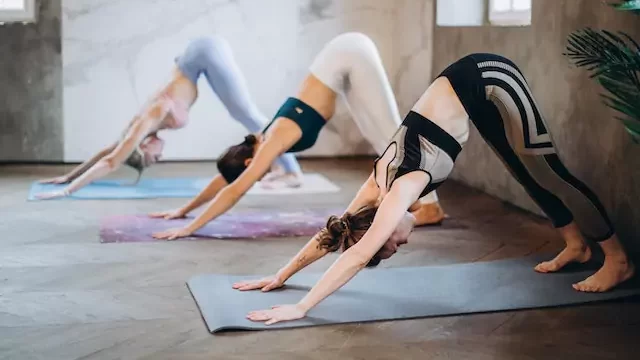
Savasana (Corpse Pose)
- Savasana is a resting pose that is often done at the end of a yoga practice. It is a great way to relax the body and mind, and to integrate the benefits of the practice.
- To do Savasana, lie down on your back with your legs extended and your arms at your sides. Close your eyes and relax your body. Allow your breath to become slow and deep.
- You can stay in Savasana for as long as you like, but 5-10 minutes is a good amount of time.
Relaxation Pose (Yoga Nidra)
- Yoga Nidra is a deep relaxation technique that is often described as “yogic sleep”. It is a great way to relax the body and mind, and to access the subconscious mind.
- To do Yoga Nidra, lie down on your back with your legs extended and your arms at your sides. Close your eyes and relax your body. Focus on your breath and allow it to slow down and deepen.
- As you breathe, scan your body from head to toe, relaxing any areas of tension. You can also repeat a mantra or affirmation to help you relax.
- Yoga Nidra can be practiced for as long as you like, but 20-30 minutes is a good amount of time.
Tips for Practicing Yoga Poses
Here are some tips for practicing yoga poses:
- Start slowly and gradually increase the difficulty of the poses as you get stronger.
- Listen to your body and don’t push yourself too hard.
- Pay attention to your breath and use it to help you relax and focus.
- Find a qualified yoga instructor to help you learn the correct way to do the poses.
FAQs
What are some common mistakes to avoid when doing yoga poses?
Some common mistakes to avoid when doing yoga poses include:
- Pushing yourself too hard.
- Holding your breath.
- Not listening to your body.
- Not warming up properly.
- Not cooling down properly.
Where can I practice yoga poses?
You can practice yoga poses at home, in a yoga studio, or outside. If you are a beginner, it is best to start practicing at home where you can take your time and learn the poses correctly.
What are the benefits of doing yoga poses?
The benefits of doing yoga poses are many and varied. They can help to improve flexibility, strength, balance, and range of motion. They can also help to reduce stress, anxiety, and depression.
How often should I practice yoga poses?
It is recommended to practice yoga poses at least 3-4 times per week. However, even practicing once a week can be beneficial.

